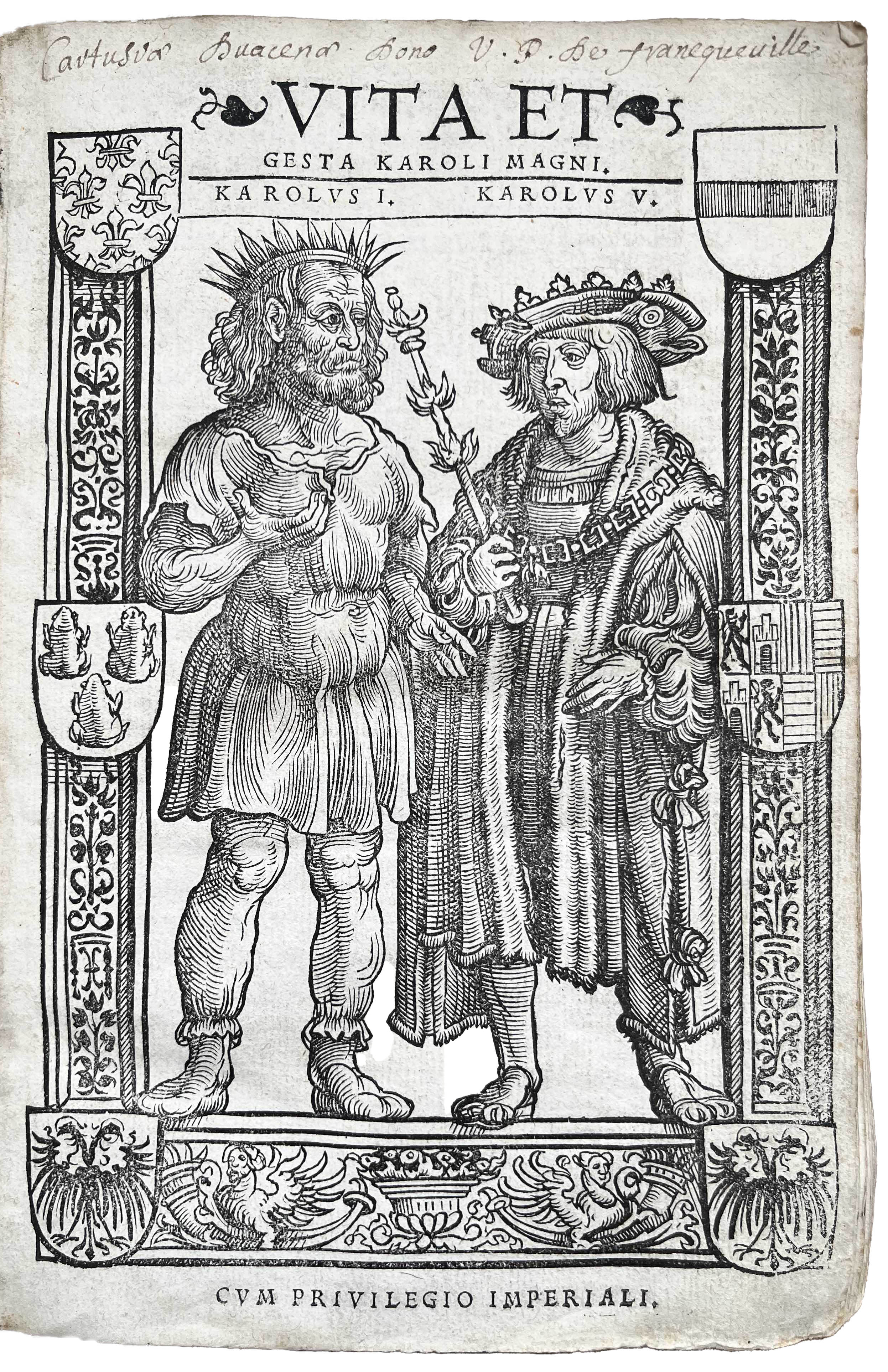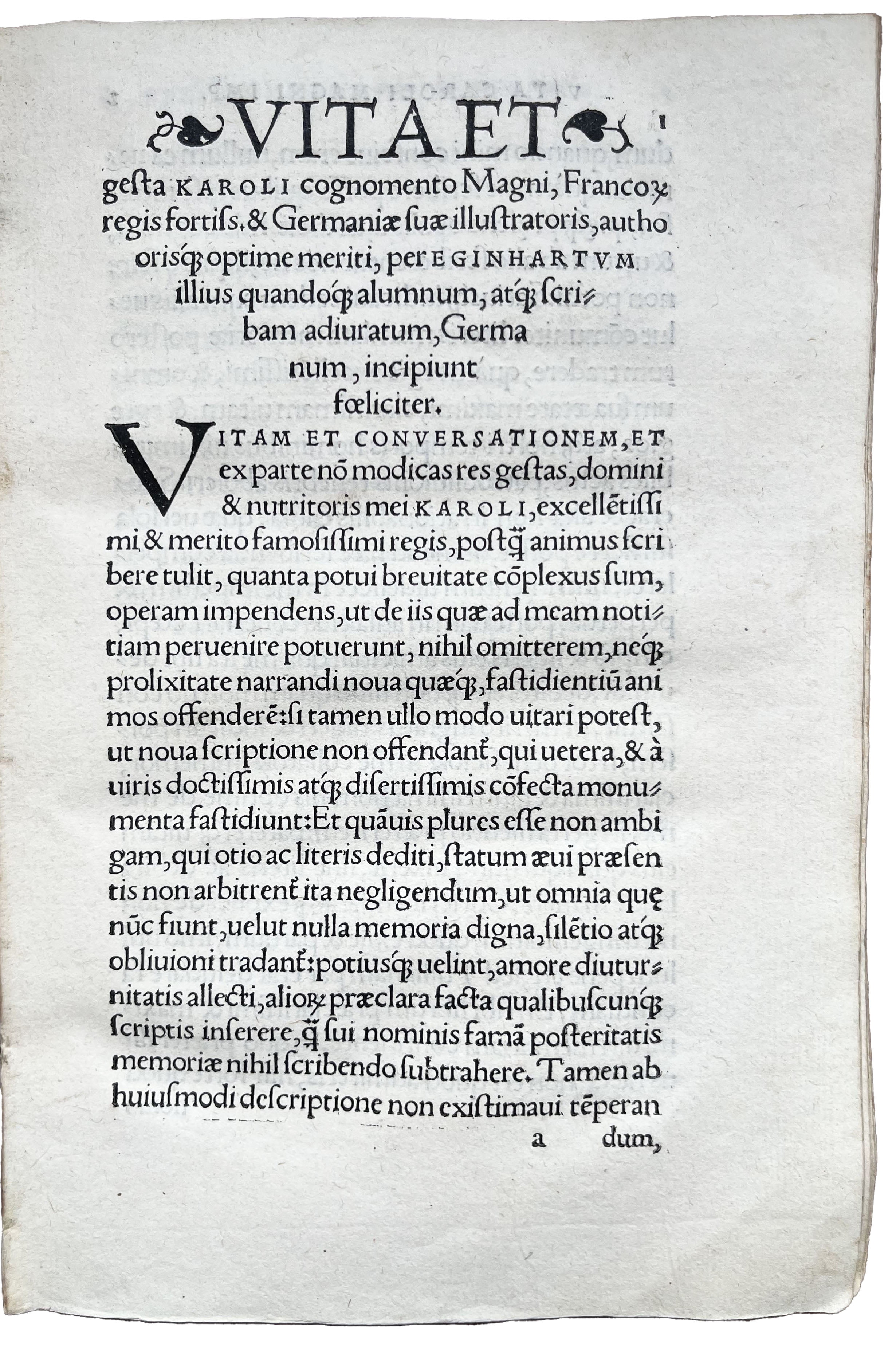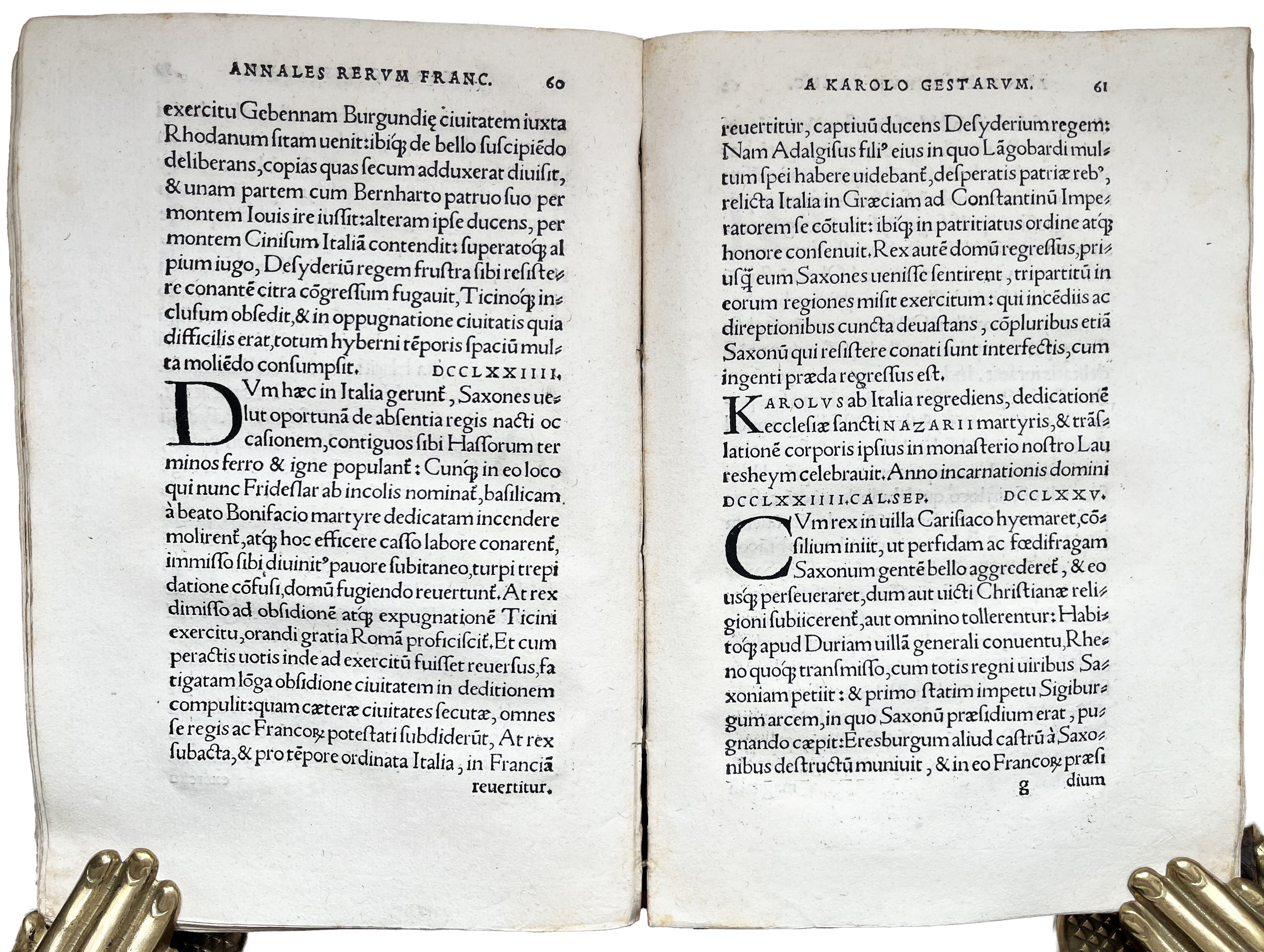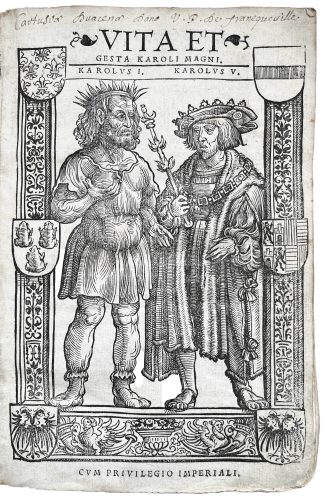EINHARD.
FIRST ROYAL BIOGRAPHY
Vita et gesta Karoli Magni […] Annales Regum Francorum
Cologne, Johann Soter, 1521£6,750.00
FIRST EDITION. 4to, pp. (xxviii) 169 (iii). Roman letter, typographical ornament, one large decorated initial. Attractive woodcut title page with standing figures of Charlemagne and Carles V within an ornated frame with six coat of arms, printer’s device to verso of last. Light age yellowing, a few blank lower outer corners slightly soiled. An excellent, well-margined copy, crisp and clean, in very high quality contemporary black deerskin, soft and thick, covers triple blind ruled to a panel design, outer frame with circular stamps containing sunburst, central section blind ruled in a diaper pattern with the same stamps. Spine with blind ruled raised bands and cross-hatched decoration in compartments, repair at head and lower outer corner front cover, three ties preserved, early ms. title to outer edge. C19 label bookplate with monogram “MG” to front paste-down, c. C18 ms. “Cartusiae Duacenae Dono V. P. de Francqueville” to t-p. In modern case.
Important first edition of Einhard’s classic biography of Charlemagne, remarkably in a luxury contemporary – probably Rhenish – binding. The editor, Count Hermann von Neuenahr (c. 1492-1530) was an influential German theologian and statesman, friend of Erasmus.
Einhard (c. 775-840) was an outstanding Frankish historian and writer. Educated at the monastery of Fulda, a major learning centre in the Frank lands, he lived for many years at the court of Charlemagne. Here, he worked as an architect and became a close friend and adviser to the emperor. After Charlemagne’s death, Einhard was appointed secretary to his son and successor Louis the Pious, but soon left the court and retired to the abbey of Seligenstadt, where he died. He founded – with the English theologian Alcuinus and the Lombard monk Paul the Deacon – the prestigious Schola Palatina, Charlemagne’s court school.
‘Vita et gesta Karoli Magni’ (Life of Charles the Great) is a masterpiece of Medieval literature, considered the first biography ever written of a European ruler. Based on official accounts held in the royal archives and on the author’s own memories, this is one of the most important and reliable sources of information concerning Charlemagne and his reign. The work is modelled on Suetonius’ Lives of the Cesars: the first section is concerned with Charlemagne’s life as king, his career and public life; the second outlines his physical appearance and character, his private life, including details of his health, his favourite dishes and pastimes. “His body was large and strong; his stature tall but not ungainly (…) His nose was rather larger than is usual; he had beautiful white hair; and his expression was brisk and cheerful; so that, whether sitting or standing, his appearance was dignified and impressive. (…) He constantly took exercise both by riding and hunting. (…) He took delight in the vapour of naturally hot waters, and constantly practised swimming, in which he was so proficient that no one could be fairly regarded as his superior.” (Grant)
The fine woodcut title-page illustration was realised by the German Anton Woensam von Worms (c 1493–1541) and it particularly fascinating. “A very strange image of Charlemagne appears in the frontispiece (…) He is not dressed in attire appropriate either to his office or to a dignified genealogy of the German peoples. Here Charlemagne appears in anachronistic garments, his leggings gathered loosely about his waist and ankles, and on his head a reed-like crown so unlike the jewel-encrusted ones he was rumoured to have worn. With his long hair, beard and loose tunic draping his outsized frame, Charlemagne represents an inventory of barbaric attributes” (Leitch).
This edition also includes a text titled ‘Annales Regum Francorum”, a series of annals recording year by year the main events occurred during the reigns of Pepin the Short, Charlemagne and Louis de Pious, from 741 to 808. The authorship of this text – of which several versions exist – is unknown, but they have been often attributed to Einhard in the past and thus frequently paired to his Vita Karoli.
The ms. inscription on the t-p indicates that this volume was gifted by “V.P. de Francqueville” to the Carthusian monastery of Douai (Northern France). The de Francqueville (or Franqueville) family was a French noble family with a prominent branch settled in Douai, where notable members held high positions in the Parlement de Flandres during the 18th century.
USTC 701466; VD16 E726; BM STC Ger. 16th century, p. 262, Adams E74. Not in Graesse or Brunet. A. J. Grant, Early Lives of Charlemagne (2015). S. Leitch, ‘The Wild Man, Charlemagne and the German Body’ in Mapping Ethnography in Early Modern Germany (2010)In stock






